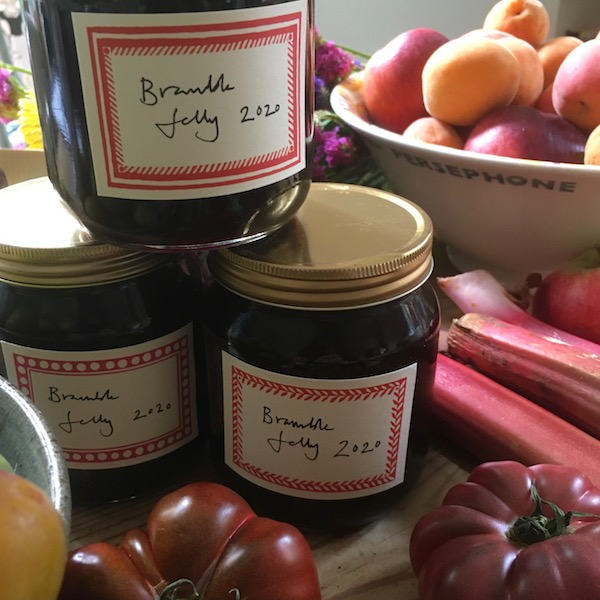11 Aug Harvest Festival
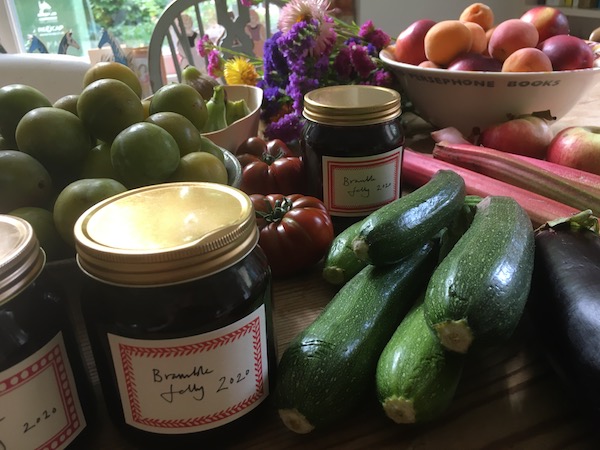
The days of plenty are here. We’re in the last weeks of this boiling hot summer, so reminiscent of the summers of our youth, before the era of mass tourism, activities, and eating out dawned. There has been a lot of free-range swimming in the river, sleeping in tents in the garden, and reading. Cambridge is suddenly bustling again, but in a rather nice way: the streets busy, but not full to bursting, with visitors who have come under their own steam from other parts of the UK and occasional particularly enterprising travellers from overseas. There are none of the great parties of bewildered and unhappy language students who have filled the summer streets for the last decade, all wearing their matching backpacks and trailing after their guide, looking utterly morose. We hope they’re happily at home instead, spared the ordeal of compulsory cultural appreciation in the sweltering heat.
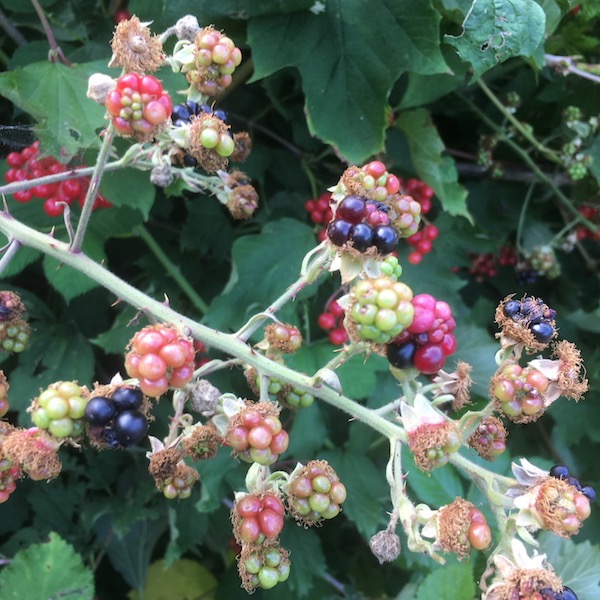
In early June we wrote about the satisfactions of foraging at field margins and in hedges for elderflower, and the incomparable deliciousness of that strange flowery cordial when you make it yourself. We’re just finishing the last bottle of the vintage we laid down then. Now another landmark of the revolving year has arrived. The hedges, no longer soft and verdant but instead scratchy and thorny, towering with shoulder high nettles and great fierce malevolent cords of bramble, are nevertheless full of good things if you are prepared to do battle for them. The blackberries are ripening. Autumn is coming.
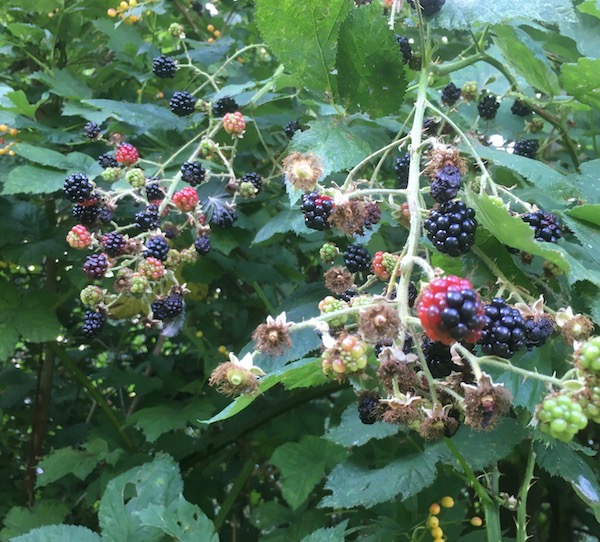
Elderflower cordial has just one purpose (two, if you make gooseberry and elderflower ice-cream) and lasts only for a couple of months. Blackberries are more versatile: delicious eaten fresh with cream and sugar, or baked with apples in a pie or crumble, they can also be used to make the very best jam available to humanity. It will last for six months or more, so one can make enough to last right through the winter. In this year of being prepared, making-do and creating one’s own entertainment, it’s a particularly apposite project.
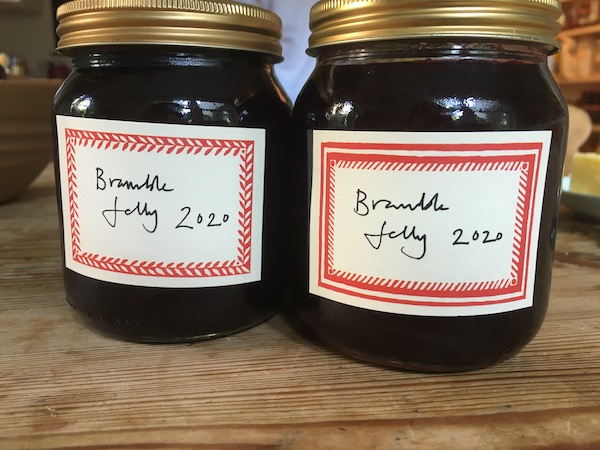
Ideally, when blackberry-picking, one would be suitably dressed for protection against the thorns: trousers, long sleeves, stout shoes, carrying a tupperware pot for collecting and a walking stick to pull down branches, as the best berries are always tantalisingly out of reach. In real life, you will likely be wearing flip-flops and shorts when you happen across a good blackberry bush because life is like that. Pick as many blackberries as you can carry in the receptacle you are forced to improvise. Even half a pound will make a small jar. But in an ideal world, you want a pound or two. They don’t have to be perfect: if they’re plentiful, err on the side of the slightly less ripe berries rather than the completely ripe squashy ones that fall off into your hand. Our recipe is ideal for a small quantity of fruit, the amount you might get if you are picking for twenty minutes. It works much better to make a couple of jars at a time than a heroic quantity all at once. The process really only takes half an hour, so you can repeat easily every couple days right through August and into September, until your store-cupboard feels prudently full. Alternatively, if you are lucky enough to have picked a really serious quantity of fruit, divide your harvest up and make the jelly in small batches.
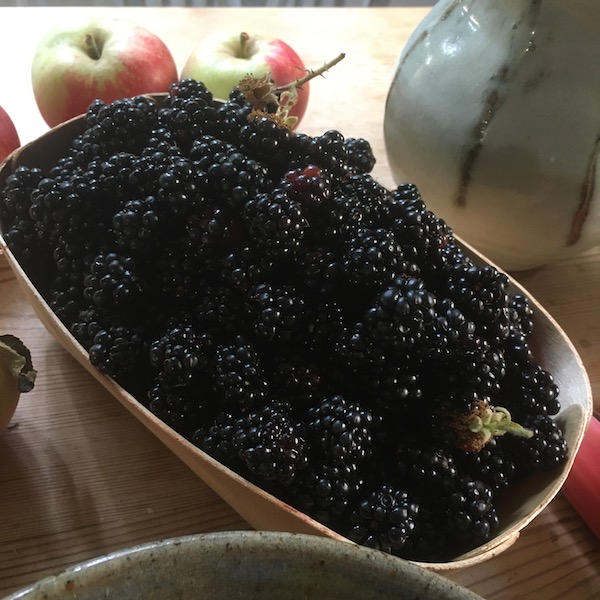
HOW TO MAKE BRAMBLE JELLY
Put the blackberries in a pan with not quite enough water to cover them. Place the pan on a low heat and simmer for about 15 or 20 minutes, until the fruit has lost a lot of its colour and got soft. Strain the juice through a nylon sieve.
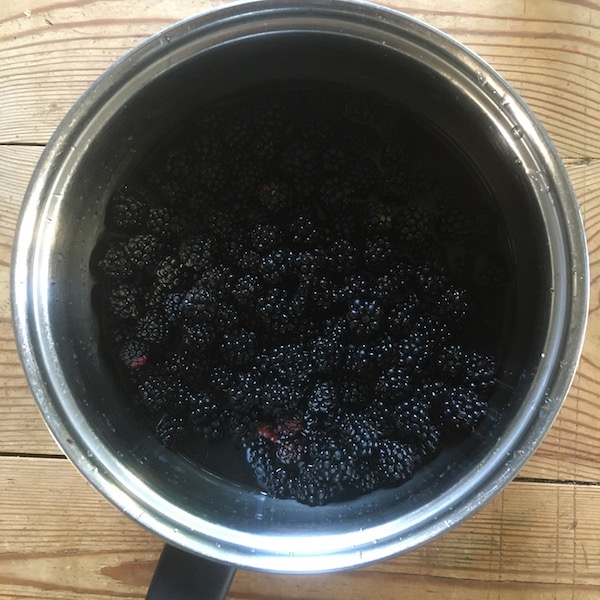
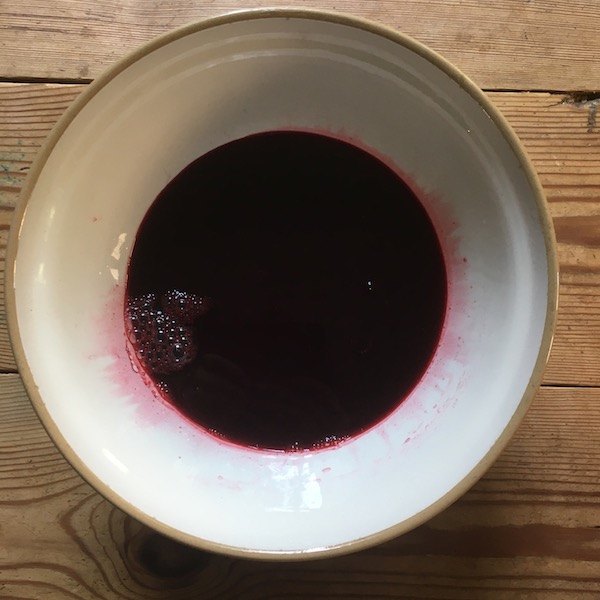
Get a wooden spoon and squash the fruit through the sieve for a couple of minutes to squeeze out every further drop of juice and pulp that you can. You’ll be left with a deep red paste of seeds and skins in the sieve, which you can throw away.
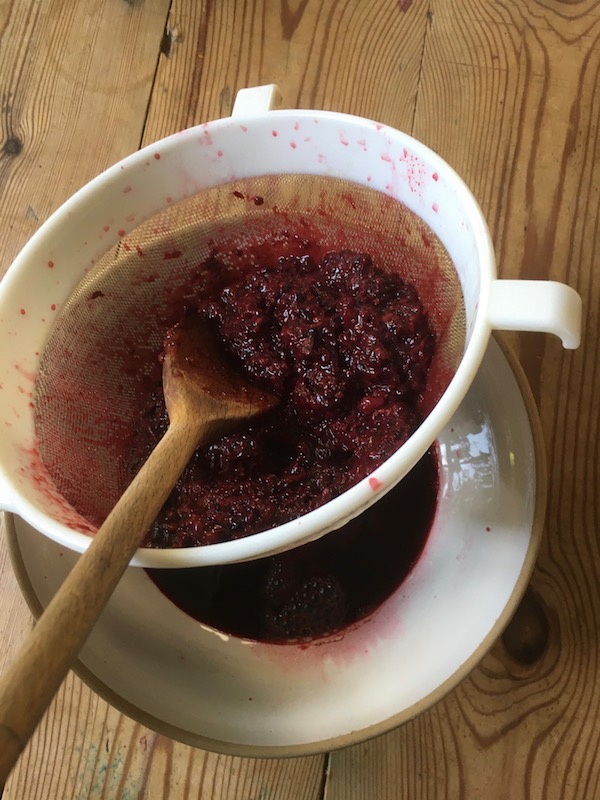
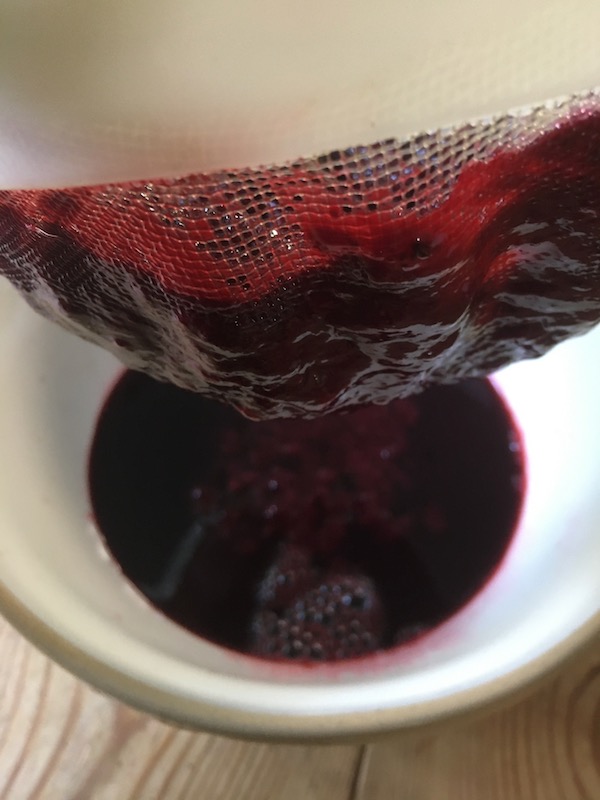
Measure the combined juice and pulp and put it in a large saucepan with a thick bottom. For every millilitre of juice add the same number of grams of ordinary granulated sugar. (There is no need to buy expensive preserving sugar.) Add also the juice of a lemon.
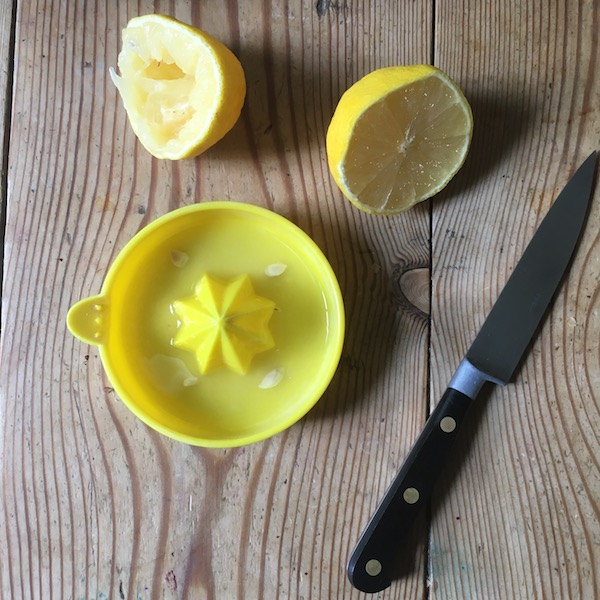
Put the pan on a low heat and gently stir until all of the sugar has completely dissolved: you can tell when this has happened because the mixture which was an opaque dark red and which felt granular under your spoon suddenly becomes a smooth shiny black.
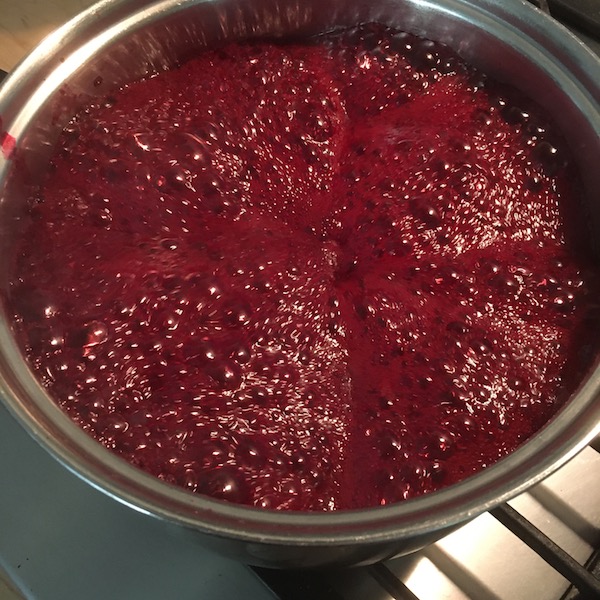
As soon as the sugar is dissolved, turn the heat up high and bring the juice to a rolling boil as quickly as you can. (A rolling boil looks like the picture above. You don’t need to stir. But keep a close eye on it as it can boil over if the pan isn’t big enough.) Boil hard for five minutes, then turn off the heat. Decant straight into clean jars which you had warming in the oven.
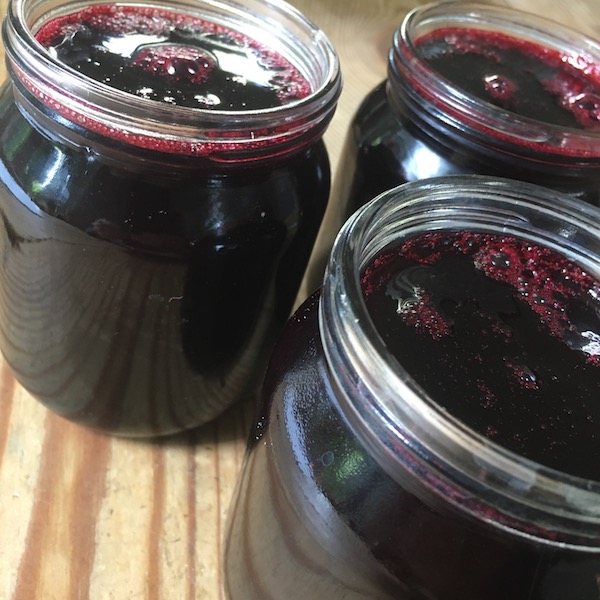
The juice should set very rapidly into a perfect, very soft jelly, with a powerful blackberry flavour. The reason you need to make this jelly in small batches is so that you can bring the temperature up very fast. With too large a volume, it can take much longer to get to a rolling boil, and instead of setting to a soft jelly you get a thick, sticky treacle. There’s never any need to fuss with a jam thermometer or testing the set with frozen saucers either. The jelly almost always will set and testing often prolongs the boil for a crucial extra minute or two, which is long enough to take the jelly from softly-set to rubber-hard.
Pop lids on the jars as quickly as you can, but wait until the jars are absolutely cool before allowing yourself the ultimate satisfaction of labelling them. We do, of course, use our own labels for this, and very nice they look. They are of thick ivory paper with a sober yet vivid border, and have the key feature that, once you have eaten all the jam, the label will come cleanly off the jar after just a couple of minutes soaking, making reusing that jar easier. The labels are available from our shop, here.
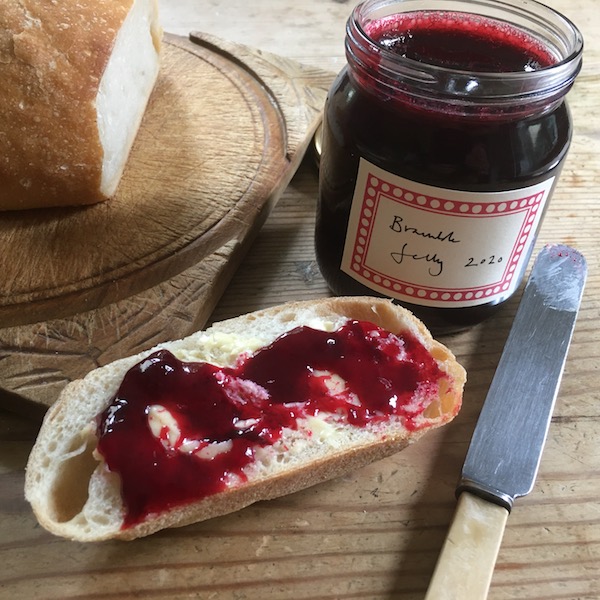
This has been a year that has taught us to value all the bread-and-butter virtues of ordinary life and that there’s no place like home. A breakfast of new white bread spread with cool yellow butter and unlimited bramble jelly has to be the most literal as well as one of the most delicious of those ordinary but sacred treats. What manifold blessings there are in the world, when you have the time to notice them.

